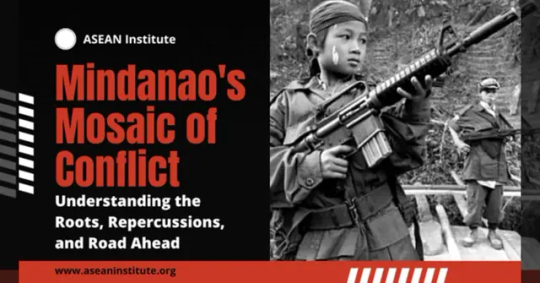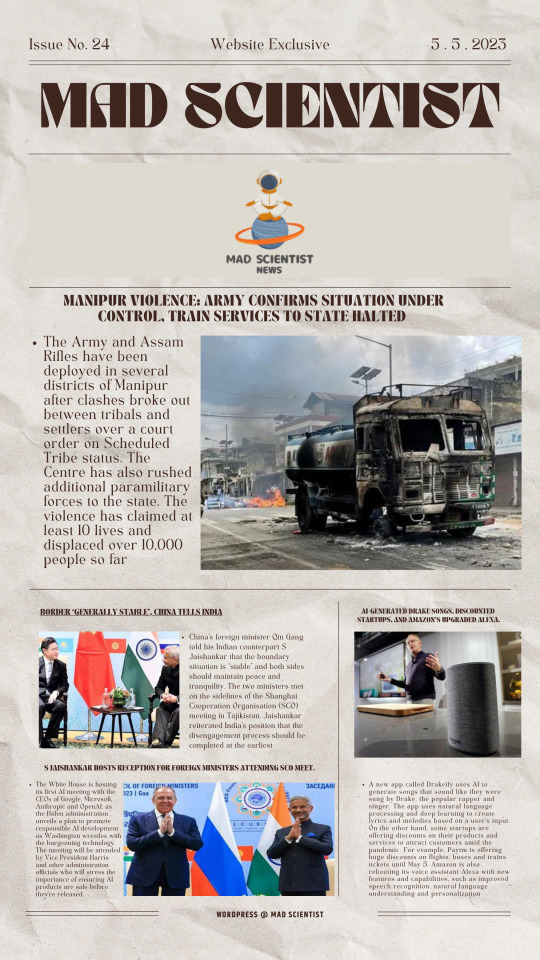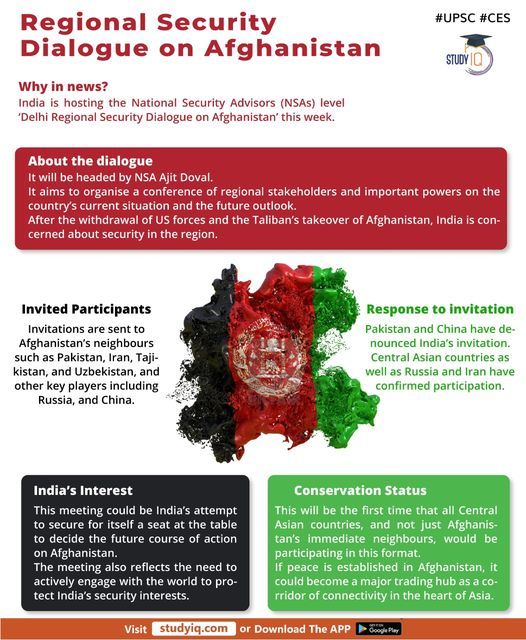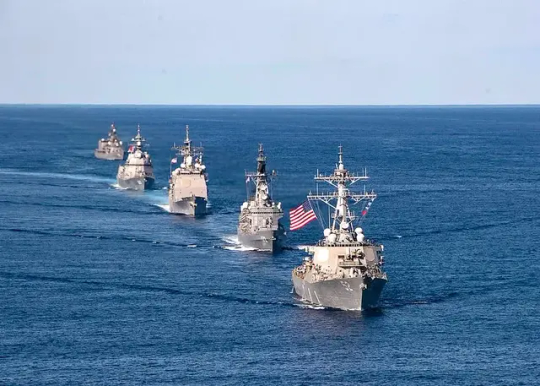#RegionalSecurity
Text
Indo-Pacific Defense Collaboration Endorsed

The United States has taken a significant step in strengthening its defense relationships in the Indo-Pacific region. Following extensive consultations with allies and partners, a Statement of Principles for Indo-Pacific Defense Industrial Base Collaboration was endorsed, aiming to enhance security and stability.
Introduction
In a landmark move, the U.S. and its allies endorsed a Statement of Principles for Indo-Pacific Defense Industrial Base Collaboration. This endorsement, announced at the 2024 Shangri-La Dialogue in Singapore, aims to strengthen defense industrial resilience and enhance regional security through collaborative efforts.
Background and Context
The endorsement comes after comprehensive discussions with U.S. allies and partners across the Indo-Pacific, including the Maluhia Talks in Honolulu, Hawaii. Secretary of Defense Lloyd J. Austin III highlighted this initiative during his speech at the 2024 Shangri-La Dialogue in Singapore, emphasizing the importance of breaking down national barriers and integrating defense industries to fortify shared capacity.
Key Principles of the Statement
The Statement of Principles outlines several core objectives to guide collaborative actions among participating nations. These principles include:
- Enhancing Industrial Resilience: Ensuring the shared defense industrial resilience is crucial for regional security, economic stability, and prosperity.
- Expanding Capabilities: Strengthening defense industrial resilience requires expanding industrial base capability, capacity, and workforce.
- Increasing Supply Chain Resilience: Promoting supply chain resilience to mitigate potential vulnerabilities and facilitate cooperation.
- Promoting Defense Innovation: Encouraging defense innovation and improving information sharing among allies.
- Standardization and Cooperation: Facilitating standardization, reducing barriers to cooperation, and optimizing collaboration by considering the needs and capabilities of participants.
Collaborative Actions and Future Dialogue
The principles emphasize that collaborative actions will involve not only governments but also industry, academia, and other partners. This inclusive approach aims to leverage diverse resources and expertise to achieve shared goals.
Key Principles for Defense Industrial Collaboration
Principle
Objective
Industrial Resilience
Ensure regional security and economic stability
Capability and Capacity Expansion
Strengthen industrial base capability and workforce
Supply Chain Resilience
Promote resilience to mitigate vulnerabilities
Defense Innovation
Encourage innovation and improve information sharing
Standardization and Cooperation
Facilitate standardization and reduce cooperation barriers
Impact of the Statement
The adoption of this statement is expected to have far-reaching implications for regional security and defense cooperation. By fostering collaboration, the participating nations aim to build a more resilient and integrated defense industrial base that can respond to emerging challenges more effectively.
Recent Developments
This initiative follows the January 2024 release of the Department of Defense's National Defense Industrial Strategy (NDIS), which identified the expansion of global defense production as a key effort towards advancing resilient supply chains. The NDIS emphasizes the need for multilateral and bilateral agreements to boost defense production, innovation, and overall capability.
Conclusion
The endorsement of the Statement of Principles for Indo-Pacific Defense Industrial Base Collaboration marks a pivotal moment in regional defense cooperation. By committing to these principles, the U.S. and its allies are poised to enhance their defense industrial resilience, ensuring greater security and stability in the Indo-Pacific region and beyond.
Call to Action
For more insights into how these collaborative efforts are shaping global defense strategies, follow THX News for the latest updates and expert analysis on defense and security matters.
Sources: THX News & US Department of Defense.
Read the full article
#collaborativedefenseactions#Defenseindustrialbase#defenseindustry#defenseinnovation#defenseintegration#defensepartnerships#defenseproduction#Regionalsecurity#Securitycooperation#thxnews
0 notes
Text
The Chinese and Vietnamese Coast Guards recently conducted their first Joint Patrols in the Beibu Gulf for this Year of 2024 which, if the Philippines did the same with China, would’ve been called as “Appeasement” by the Propaganda of the United States (US) and their devoted Filipino Fans
Music by: https://www.bensound.com
License code: EQAQHXFKBXDPP4WY
Music is “Inspire” by Benjamin Tissot from the Bensound Website
This was initially released as an Article last May 18, 2024 at https://therhk111philippinedefenseupdates.blogspot.com/2024/05/china-vietnam-make-first-joint-patrol-beibu-gulf-year-2024.html
#china#vietnam#beibugulf#chinacoastguard#vietnamcoastguard#ccg#vcg#propaganda#narrative#unitedstates#philippines#jointpatrol#standingup#maritimelawenforcement#southchinasea#scs#regionalsecurity#regionalstability#maritimecrimes#fisheryresources#cooperationmechanism#philippinepress#filipinopeople
0 notes
Text
POTUS, call for a ceasefire, aid, and a return of the hostages in the SOTU!
An open letter to the President
893 so far! Help us get to 1,000 signers!
First, I was very glad to hear Vice President Harris call for a ceasefire and an immediate return of the hostages. More of that, please.
Second, on Thursday for the State of the Union address I hope you will find a way to demonstrate deep, personal concern both for the Israeli people and for the people of Gaza. But they and others in the region need more than empathy. They need your leadership. They look to the United States as the “indispensable player” – and those of good will hoping for a more secure and peaceful future are looking to you for a vision and a plan to get there.
In light of that, please make these six key points on Thursday (as suggested by J Street):
There must be an immediate negotiated ceasefire that stops the fighting for a considerable period, frees the remaining hostages and surges humanitarian assistance to the people of Gaza.
You will do all in your power to ensure that sufficient humanitarian assistance – food, fuel, water, medicine, shelter – reaches Gazans in the coming days, with or without a ceasefire.
Recognize that nearly 57 years of Israeli occupation must end and declare your support for the establishment of a demilitarized Palestinian state.
Reiterate Secretary of State Blinken’s recent statement that Israeli settlements in the territory it occupies are inconsistent with international law and that the United States will take meaningful actions to crack down on settler violence and ensure that Israel stops expanding settlements in areas that will be part of a Palestinian state.
Outline how eventual statehood for Palestine is only one piece of a bold vision for the future of the region – one in which Israel has meaningful security, guaranteed by fully normalized relations with all its neighbors.
Finally, make clear to the Israeli and Palestinian people that the future is in their hands. There is a path to security, dignity and prosperity for both peoples, and there is also the path of never-ending conflict and bloodshed. The US will rally friends around the world to support the two peoples if they choose a future of peace and mutual recognition. You should make it equally clear that those not willing to sign on to that vision and respect the rule of law will no longer have our unquestioning support.
This is so important. We want an end to the fighting; we want civilians on both sides of this conflict to be able to live safely, and we want a two-state solution. We do NOT want American money to go towards the killing of women and children. Period.
Most of all we want you to succeed—and you can’t do that unless you call for a ceasefire and stand up to Netanyahu, who is not your friend or a true friend to Israel. Do the right thing and the American people will have your back. Thanks.
▶ Created on March 4 by Jess Craven
📱 Text SIGN PMTANN to 50409
🤯 Liked it? Text FOLLOW JESSCRAVEN101 to 50409
#JESSCRAVEN101#PMTANN#resistbot#petition#OpenLetter#Ceasefire#HostageReturn#StateOfTheUnion#Leadership#PeacePlan#HumanitarianAid#IsraeliOccupation#PalestinianStatehood#Settlements#InternationalLaw#RegionalSecurity#PeacefulResolution#Diplomacy#PeacefulCoexistence#ConflictResolution#USLeadership#MiddleEastPolicy#ForeignPolicy#CrisisResponse#GlobalRelations#PeaceAdvocacy#PoliticalAction#PublicAppeal#PolicyChange#InternationalRelations
0 notes
Text
Mindanao's Mosaic of Conflict

Delving into the heart of Mindanao's unrest, the article sheds light on the multifaceted struggle involving Islamic State militants, local grievances, and the broader implications for regional and international security.
For a detailed exploration, you can read the full article here: Mindanao's Mosaic of Conflict: Understanding the Roots, Repercussions, and Road Ahead
0 notes
Text
US and India Join Forces to Build Armored Vehicles, Strengthening Regional Security
#coproducearmoredvehicles #counterChinasmilitarypresence #jointproductionofarmoredvehicles #regionalsecurity #strengthendefenseties
#Politics#coproducearmoredvehicles#counterChinasmilitarypresence#jointproductionofarmoredvehicles#regionalsecurity#strengthendefenseties
0 notes
Text
youtube
#youtube#militarytraining#RoyalThaiNavy#SouthKoreanNavy#FerryExercise#CobraGold2024#MilitaryExercise#NavalForces#AsiaPacificSecurity#DefenseAlliance#JointTraining#MaritimeSecurity#Thailand#SouthKorea#NavalCooperation#MilitaryDiplomacy#RegionalSecurity#NavyTraining#InternationalDefense#MilitaryPartnership#NavyForces#MilitaryExercise2024
0 notes
Text
Russian Fighter Jets in Myanmar
The US has issued a stern warning, declaring Russia’s support for Myanmar’s military leadership as both unacceptable and destabilizing.
Read more at:
#MyanmarMilitary#RussiaMyanmarRelations#Su30FighterJets#ArmsDeal#RegionalSecurity#MyanmarDefence#PressXpress#PX
0 notes
Text

#AIgeneratedDrakeSongs#DiscountedStartups#AmazonAlexaUpgrade#ManipurViolence#BoundarySituation#SCOMeeting#RegionalSecurity#Afghanistan#COVID19Cooperation#news#newspaper#madscientistwriting#madscientistnews
0 notes
Text

0 notes
Text
Austin Highlights China Military Communication

At the Shangri-La Dialogue in Singapore, Secretary of Defense Lloyd Austin stressed the significance of U.S.-China military communication, regional security, and strong alliances. Austin’s remarks addressed the importance of preventing miscalculations, ensuring freedom of navigation, and reaffirming U.S. commitments to Indo-Pacific allies.
Dialogue with China
Maintaining open lines of communication between the U.S. and China is critical to avoiding misunderstandings and miscalculations. Secretary Austin emphasized the need for direct military-to-military communication to prevent unintended conflicts.
Highlighting plans to resume telephone conversations between theater commanders and establish a crisis-communications working group by the end of the year, Austin underscored the importance of transparency and dialogue.
Recent Chinese military activity around the Taiwan Strait has raised concerns. Austin reiterated the U.S.'s adherence to its one China policy, guided by the Taiwan Relations Act, the Three Joint Communiques, and the Six Assurances. The U.S. does not support Taiwan independence but maintains a vested interest in peace and stability in the Taiwan Strait.
Key Points in U.S.-China Relations
- Open Military Communication: Direct communication channels to prevent conflicts.
- One China Policy: Commitment to Taiwan Relations Act and peace in the Taiwan Strait.
- Regional Security: Addressing Chinese military activity and ensuring stability.
South China Sea and Regional Security
In the South China Sea, the U.S. remains committed to conducting operations in accordance with international law, ensuring freedom of navigation. Austin criticized China's increasing provocative and destabilizing military actions near Taiwan. These activities threaten regional stability and violate international norms.
Austin also addressed Russia’s war in Ukraine, highlighting China's support for Russia's defense industry. Additionally, he expressed concerns over North Korea's provocations, including recent missile launches and support for Russia's aggression in Ukraine.
Avoiding Conflict with China
While tensions between the U.S. and China are rising, Austin stated that war with China is "neither imminent nor unavoidable." He emphasized the importance of dialogue to manage tensions and prevent conflicts. Austin assured that the U.S. would continue to protect the rights and access of its allies to exclusive economic zones in the East and South China Seas, in accordance with international law.
Austin called for China to refrain from further destabilizing actions toward Taiwan and to engage in constructive dialogue. He reiterated the U.S. commitment to defending its interests and allies while avoiding unnecessary escalation.
U.S. Alliances and Partnerships
Secretary Austin reaffirmed the U.S. commitment to its alliances and partnerships in the Indo-Pacific region. He praised Philippine President Marcos for upholding sovereign rights under international law in potential confrontations with China in the South China Sea. Austin reassured that the U.S. stands by the Philippines as a treaty ally.
Regarding Singapore, Austin highlighted its status as a "major security cooperation partner" and valued defense partner of the U.S. He commended Singapore's regional leadership and principled stance in supporting a rules-based order. Austin emphasized that the U.S. National Defense Strategy prioritizes collaboration with allies and partners to deter potential Chinese military aggression against Taiwan.
Cooperation in Critical and Emerging Technologies
The U.S.-Singapore Critical and Emerging Technology Dialogue spotlighted several key areas of cooperation:
Technology Area
Collaborative Efforts
Artificial Intelligence
Launch of a joint AI governance group for safe innovation
Quantum Computing
Development of post-quantum cryptography methods and standards
Biotechnology
Advancing research in gene therapies and delivery systems
Critical Infrastructure
Promoting climate-resilient infrastructure and secure supply chains
Digital Economy
Developing a roadmap for digital economic cooperation
Defense Innovation
New MOU on defense innovation between the U.S. and Singapore
In his opening remarks, Singapore's Deputy Prime Minister Lawrence Wong emphasized the importance of fostering open, accessible, and secure tech ecosystems to leverage emerging technologies for solving global challenges. The dialogue aims to enhance bilateral cooperation across these key areas, strengthening the technological capabilities of both nations.
Key Points in Regional Security
- South China Sea Operations: Commitment to international law and freedom of navigation.
- Support for Allies: Reaffirming U.S. commitments to the Philippines and Singapore.
- Technology Cooperation: Advancing AI, quantum computing, and biotechnology with Singapore.
Final Thoughts and Summary of U.S. Strategy
Secretary Austin's remarks at the Shangri-La Dialogue highlighted the U.S. commitment to regional security, open communication with China, and support for allies and partners in the Indo-Pacific. By maintaining open lines of communication, ensuring freedom of navigation, and fostering technological cooperation, the U.S. aims to manage tensions and promote stability in the region.
- Military Communication: Preventing conflicts through open dialogue with China.
- Regional Security: Conducting operations and ensuring freedom of navigation.
- Alliance Strengthening: Supporting Indo-Pacific allies and advancing technology cooperation.
Sources: THX News, US Embassy Singapore, ABC News, Broadband Breakfast & US Department of Defense.
Read the full article
#Chinamilitarycommunication#LloydAustinremarks#Regionalsecurity#Shangri-LaDialogue#SouthChinaSea#TaiwanStraittensions#U.S.-Chinarelations
0 notes
Text
Why Are Swarms Of Locusts Wreaking Havoc In East Africa? via @NPR https://t.co/oOjsdxJSt5#Africa #AU #URGENT #locusts #crisis #food #foodsecurity #farms #insects #RegionalSecurity #humanity
— Chuck Dalldorf (@ChuckDalldorf) February 23, 2020
0 notes
Text
Taiwan's Presidential Elections: Tsai Ing-wen, China, and the Future of East Asia
#ChinaTaiwanrelations #crossstraitrelations #regionalsecurity #Taiwanpresidentialelections #TsaiIngwen #USTaiwanrelations
#Politics#ChinaTaiwanrelations#crossstraitrelations#regionalsecurity#Taiwanpresidentialelections#TsaiIngwen#USTaiwanrelations
0 notes
Text
youtube
#youtube#news#IndoPacificStrategy#WashingtonForeignPressCenter#Briefing#Reflecting#Insights#TwoYears#ForeignPolicy#InternationalRelations#Diplomacy#Security#AsiaPacific#UnitedStates#Geopolitics#GlobalAffairs#InternationalCooperation#RegionalSecurity#StrategicPartnerships#MilitaryPresence#EconomicIntegration#MaritimeDomain
0 notes
Text
Strategic Bonds: U.S.-Japan Alliance Strengthens

Japan, December 5-7, 2023
In a significant diplomatic stride, Japan played host to the Government of the United States for the Extended Deterrence Dialogue (EDD). The event, a cornerstone of the enduring Japan-U.S. Alliance, convened from December 5 to 7, 2023, with the aim of sustaining and fortifying extended deterrence—a pivotal element in the bilateral partnership.
Key Co-Chairs and Delegations
The Japanese side, led by Mr. Miyamoto Shingo and Mr. Ando Atsushi, co-chaired the dialogue, representing the Ministry of Foreign Affairs and the Ministry of Defense, respectively. On the U.S. front, Ms. Alexandra Bell and Mr. Richard Johnson, deputy heads from the Department of State and the Department of Defense, spearheaded the discussions.
The dialogue involved representatives from key divisions on both sides, overseeing security policy, arms control, and military commands such as JSDF, USSTRATCOM, USINDOPACOM, and U.S. Forces Japan.
Reinforcing Deterrence in a Complex Security Landscape
Against the backdrop of escalating regional challenges, the dialogue emphasized the need to enhance deterrence and response capabilities within the Japan-U.S. alliance. The specter of ballistic missile launches by the DPRK and the growing military collaboration between Russia and China set the stage for a comprehensive evaluation of strategic priorities.
Shared Commitments and Integrated Deterrence
The U.S. commitment to the defense of Japan, rooted in the Treaty of Mutual Cooperation and Security, found reaffirmation. The dialogue underscored the steady progress on integrated deterrence strategies, aligning with the U.S. 2022 Nuclear Posture Review. Japan expressed its intent to bolster U.S. extended deterrence through a collaborative approach, leveraging its own capabilities.
In-Depth Discussions and Concrete Bilateral Cooperation
The heart of the dialogue lay in substantive discussions on extended deterrence, coupled with efforts to enhance bilateral dialogues and collaborative measures. Assessments of the regional security environment, a review of Alliance conventional and U.S. nuclear capabilities, and the optimization of force postures took center stage.
Strategic Arms Control and Regional Deterrence
As the nuclear landscape evolves, the dialogue delved into strategic arms control and risk reduction approaches. The complexity of nuclear risks posed by regional actors prompted both sides to explore avenues for deeper political, diplomatic, and defense cooperation. The commitment to enhancing the regional deterrent effect of U.S. strategic assets emerged as a strategic imperative.
Strengthening Capabilities and Crisis Management
The dialogue encapsulated a tabletop exercise, a recurrent feature in the EDD meeting agenda. It provided a platform to coordinate Alliance deterrence efforts and refine crisis management strategies. Additionally, visits to key defense installations, such as the Japan Ground Self-Defense Force’s Amphibious Rapid Deployment Brigade, showcased the practical aspects of defense and deterrence.
In essence, the U.S.-Japan Extended Deterrence Dialogue proved to be a vital forum for strategic alignment and collaborative planning in the face of evolving regional challenges. As both nations commit to deeper cooperation, the alliance stands fortified against emerging threats.
Sources: THX News & US Department of State.
Read the full article
#DeterrenceEffectiveness#ExtendedDeterrenceDialogue#Regionalsecurity#strategiccooperation#U.S.-JapanAlliance
0 notes